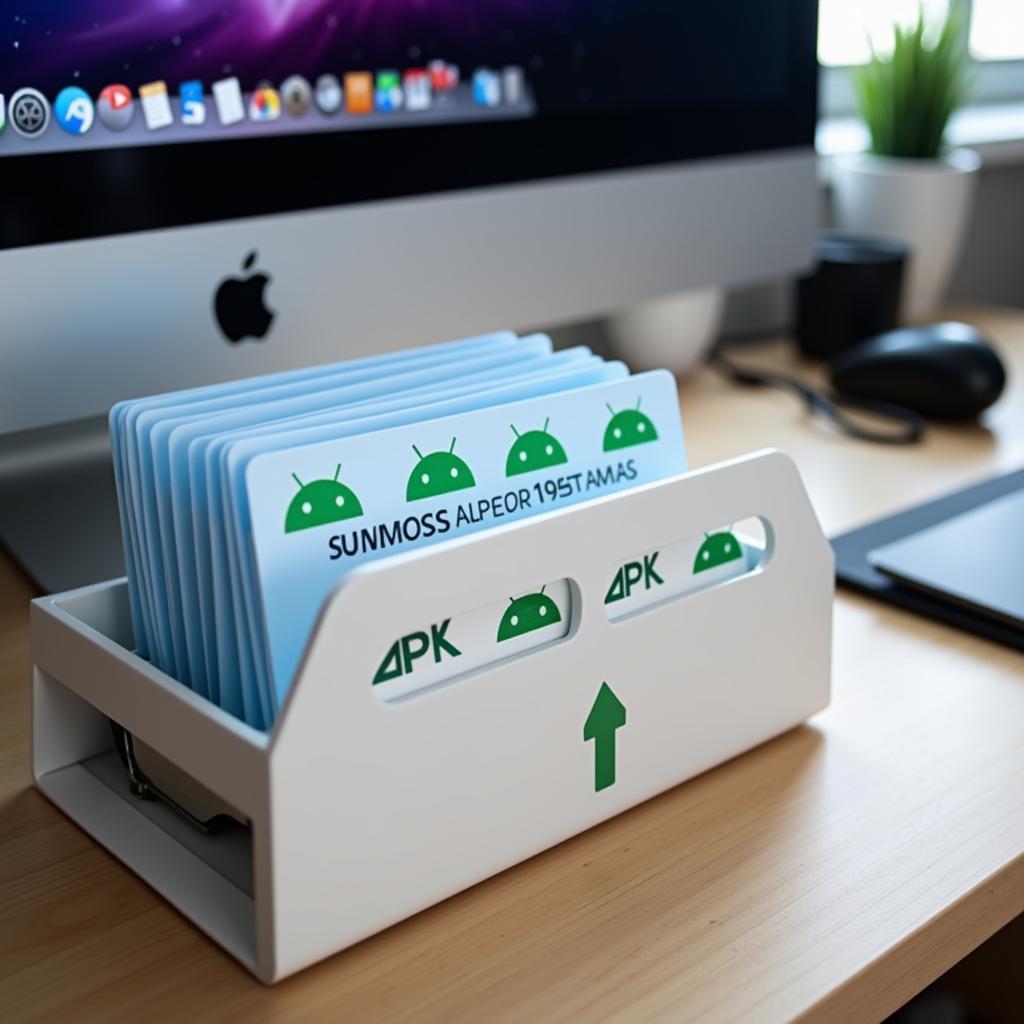Managing your backed up APK files is crucial for any Android user. Whether you’re safeguarding your favorite games, preserving app versions, or simply creating backups for peace of mind, understanding how to handle these files effectively is essential. This guide provides a deep dive into the world of backed up APKs, offering practical tips, insights, and answers to frequently asked questions.
Understanding the Importance of Backed Up APKs
Backing up your APK files provides a safety net, allowing you to reinstall apps even if they’re removed from the Google Play Store or if you lose your device. It’s also a great way to revert to older versions of apps if an update introduces unwanted changes. Having a local copy of your favorite games ensures you can always access them, regardless of internet connectivity.
 Backed Up APK Files on a Computer
Backed Up APK Files on a Computer
Different Methods for Backing Up APK Files
There are various ways to back up your APKs. Some popular methods include using dedicated backup apps, file managers, or even ADB (Android Debug Bridge) for more advanced users. Each method has its pros and cons, so choosing the one that best suits your technical skills and needs is important.
Using Backup Apps
Several apps available on the Google Play Store specialize in backing up APKs. These apps typically offer a user-friendly interface and automate the backup process.
Utilizing File Managers
File managers allow you to navigate your device’s storage and copy APK files to a different location, such as an SD card or cloud storage.
Leveraging ADB (Android Debug Bridge)
ADB offers a more technical approach, enabling you to back up APKs directly from your computer via a USB connection. This method provides more control and is particularly useful for backing up system apps.
Restoring Backed Up APK Files
Restoring your backed up APK files is generally straightforward. Most methods involve locating the APK file and tapping on it to initiate the installation process. However, it’s crucial to ensure that “Install from Unknown Sources” is enabled in your device’s settings.
Enabling “Install from Unknown Sources”
This setting allows you to install apps from sources other than the Google Play Store. It’s an important step for restoring backed up APKs.
Troubleshooting Common Issues
Sometimes, you might encounter issues when restoring backed up APKs, such as compatibility problems or parsing errors. Understanding these potential issues and their solutions is crucial for a smooth restoration process.
Best Practices for Managing Backed Up APKs
Organizing your backed up APK files is essential for easy access and retrieval. Consider creating a dedicated folder or using a naming convention that makes it easy to identify different apps and versions. Regularly reviewing your backups and deleting outdated files is also recommended.
Conclusion
Mastering the management of your backed up APK files empowers you to control your Android experience. From safeguarding your favorite games to preserving specific app versions, understanding these techniques ensures you’re always prepared. Utilizing effective backup and restoration methods allows you to maintain access to your essential apps, regardless of unforeseen circumstances. Remember to organize your backups for easy retrieval and stay informed about best practices to maximize your control over your Android device.
FAQ
-
Why should I back up my APK files? Backing up APK files allows you to reinstall apps even if they are removed from the app store or if you lose your device.
-
What are the different methods for backing up APK files? Common methods include using backup apps, file managers, and ADB.
-
How do I restore a backed up APK file? Locate the APK file and tap on it to install. Make sure “Install from Unknown Sources” is enabled in your device settings.
-
What should I do if I encounter an error while restoring an APK file? Check the file integrity, ensure compatibility with your device, and verify that “Install from Unknown Sources” is enabled.
-
How should I organize my backed up APK files? Create a dedicated folder and use a clear naming convention to identify different apps and versions.
-
What is ADB? ADB stands for Android Debug Bridge, a command-line tool that allows you to communicate with your Android device from a computer.
-
Where can I find more information about backing up APK files? Numerous online resources and forums provide detailed guides and tutorials on this topic.
Common Scenarios and Troubleshooting
- Scenario: App is no longer available on the Play Store. Solution: Install the backed-up APK.
- Scenario: Update introduces unwanted changes. Solution: Uninstall the updated version and install the backed-up APK of the previous version.
- Scenario: Device lost or damaged. Solution: Restore backed-up APKs on a new device.
Related Resources
Need further assistance? Contact us at Phone Number: 0977693168, Email: [email protected] Or visit us at: 219 Đồng Đăng, Việt Hưng, Hạ Long, Quảng Ninh 200000, Việt Nam. We offer 24/7 customer support.